SICILY
Plants and Animals

Plants and Animals
Popular destinations ITALY
| Campania | Lombardy | Sardinia |
| Sicily | Tuscany | Umbria |
| Veneto |
Plants and Animals
Plants
Due to the different climatic and soil conditions, the plant world on Sicily is strongly influenced. However, plant and tree lovers will be fully satisfied with approximately 3,000 species. Some of the species found exclusively on Sicily are the Etna birch, Etna camomile, Etna violet and the Nebrodi fir, which is no longer found in the Nebrodi Mountains but only in Le Madonie.
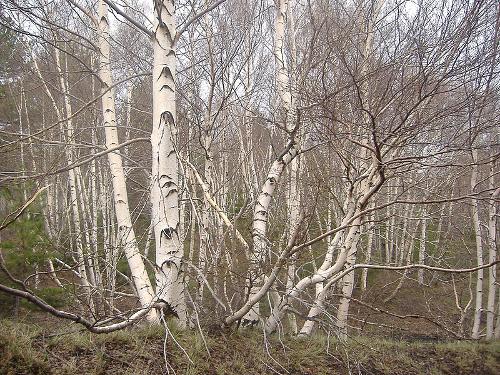 Etna Birch, SicilyPhoto: Prismatico01 in the public domain
Etna Birch, SicilyPhoto: Prismatico01 in the public domain
The original vegetation, oak and pine forests of Sicily have almost completely disappeared due to logging and cultivation. Only about 5% of the Sicilian soil is covered with forest despite some reforestation projects. At present, Mediterranean vegetation predominates, but Atlantic, subalpine and subtropical vegetation can also be found. In the Mediterranean forests of the Sicilian Apennines, the most common tree species is the evergreen holm oak, which thrives in this dry environment. Also common in these forests are the strawberry tree, the wild fig and the wild olive. The evergreen cork oak also grows in more humid areas. Above 700 metres, the rare downy oak can be found.
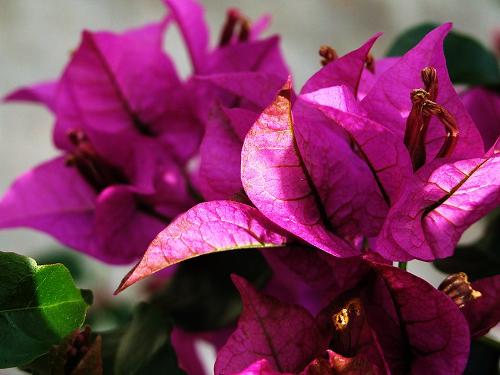 Bougainvillea, SicilyPhoto: Castielli CC 2.0 no changes made
Bougainvillea, SicilyPhoto: Castielli CC 2.0 no changes made
Beech and chestnut forests grow on Etna, Nebrodi and Le Madonie. These forests are also home to numerous plant species, such as broom, wood anemone, holly and hazel, as well as fig, acacia, mimosa, almond and olive trees and eucalyptus, imported from Australia in the 19th century. Parasol pine, maritime pine and Corsican pine are the best known conifers. Of the various palm species, only the dwarf palm is indigenous. Other notable species are the prickly pear cactus, the agave and the horned lamb's lettuce.
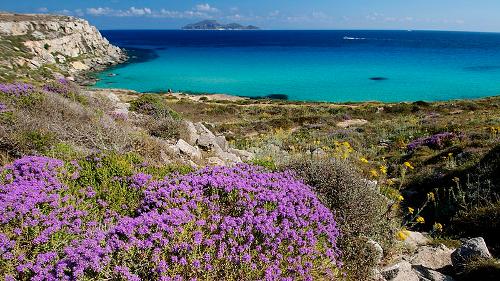 Macchia, SicilyPhoto: Roberto CC 2.0 no changes made
Macchia, SicilyPhoto: Roberto CC 2.0 no changes made
The largest part of the Sicilian vegetation is the macchia or maquis. The maquis is a thick, often impenetrable shrubby vegetation that includes tree heather, Judas trees, boxwood, common spurge, hedgehog spurge, holly oak, cistus rose, mastic, thyme, lavender, rosemary and honeysuckle. Bougainvillea, oleander and hibiscus are well-known flower species.
Animals
Deforestation and hunting have had a disastrous effect on Sicilian fauna. Hares, wild cats, weasels, polecats, wild boars and fallow deer can only be found in the Etna massif and the Sicilian Apennines.
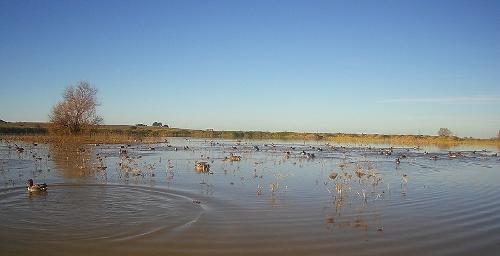 Birds at Genoi wetlands, SicilyPhoto: Manuel Zafarana CC 4.0 no changes made
Birds at Genoi wetlands, SicilyPhoto: Manuel Zafarana CC 4.0 no changes made
There are still plenty of bird species on Sicily. Of particular note are the roller, the European canary, the stone partridge, the hoopoe and the bee-eater. Flamingos, storks, spoonbills and various heron species are winter visitors. The number of birds of prey is still relatively high with buzzard, hawk, kestrel and occasionally golden eagle, red kite and sparrowhawk.
Eight species of snakes can be found in Sicily, including the poisonous asp viper, the esculapod and the green whorl snake. The emerald lizard, the tortoise and the rare frog are special attractions.
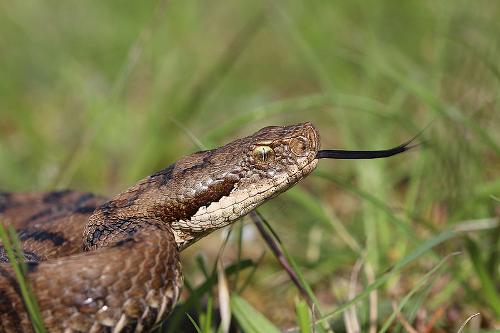 Asp Viper, SicilyPhoto: Harald van der Ploeg CC 4.0 no changes made
Asp Viper, SicilyPhoto: Harald van der Ploeg CC 4.0 no changes made
Sicily has 22 protected natural areas: 19 nature reserves, two regional nature parks and one national park, the ca. 590 km2 Etna massif (Parco dell'Etna).
Sources
Scholten, J. / Sicilië: met de Egadische en Eolische eilanden
Van Reemst
Bausenhardt, H. / Sicilië
Van Reemst
Haan-van de Wiel, W.H. de / Sicilië
Gottmer
CIA - World Factbook
BBC - Country Profiles
Copyright: Team The World of Info